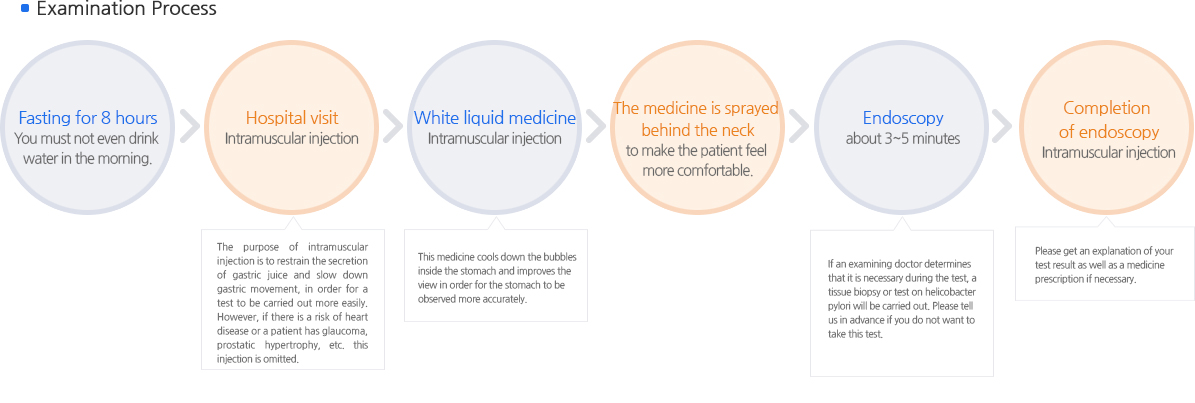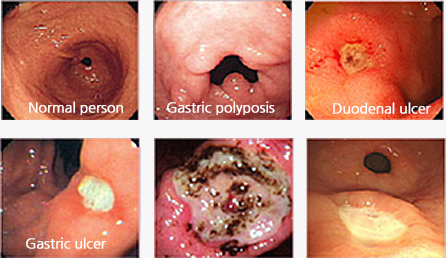What is Esophagogastroduodenoscopy?
There are various symptoms of esophageal ulcer, gastric ulcer, and duodenal ulcer such as acid reflux, heartburn, indigestion, nausea, vomit, and gas-filled stomach, but the disease cannot be diagnosed accurately only based on symptoms. A patient might miss figuring out a severe disease such as gastric ulcer or gastric cancer if she or he receives only medicine treatment without an accurate diagnosis. A patient always needs an accurate diagnosis when there are symptoms of disease. (In general, Esophagogastroduodenoscopy is a test that observes from esophagus and stomach to the upper part of duodenum.)

You may have a meal about an hour after a test is over. It is recommended to eat soft food if possible in the beginning. After the test, you might find that objects look overlapped, feel dry inside your mouth, or feel bloated inside, but these are alleviated as time goes by. If abnormal symptoms continue after the test, please contact the Office of Internal Medicine Nurse (031-813-3000 (extension 109)).
Cases that need
esophagogastroduodenoscopy
- 1Upper part digestive disease
- 2Heartburn, pain in an empty stomach, digestive problems
- 3Pain after meals, gastroenteric trouble, etc.
- 4When trying to discover gastric cancer or early gastric cancer
Diseases that can be diagnosed
by esophagogastroduodenoscopy
- 1Pharyngo disease
(posterior pharynx cancer, laryngeal cancer) - 2Pharyngo disease
(posterior pharynx cancer, laryngeal cancer) - 3Esophagus cancer, esophagus diverticula,
esophageal varix - 4Gastritis, gastric ulcer, gastric polyposis,
gastric cancer, submucosal mass - 5Gastric varix duodenitis, duodenal ulcer
- 6Detection and treatment of Helicobacter pylori





